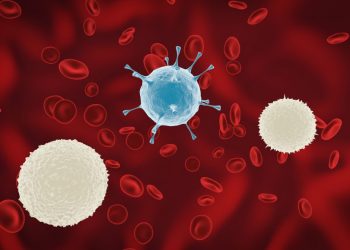
The most common symptoms of blood cancer are fatigue and anemia. They may also include pain in the arms and legs. Some patients experience itching and pale skin, while others have chest pain or a decreased level of alertness. Some patients may not experience any of these symptoms at all. The best way to diagnose this disease is to consult a doctor. Below are the most common symptoms of blood cancer. Some of them may mask other conditions such as coronavirus.
Chronic leukemia is a type of blood cancer that causes easy bruising and bleeding gums. Other symptoms may include a full feeling under the left side ribs and a lump or bruise on the ribs. Some people have no symptoms at all. If you are experiencing any of these symptoms, seek medical attention as soon as possible. If you have had this type of cancer in the past, you may need to seek treatment. Your doctor will order tests to check for the presence of this disease.
If you're experiencing any of these symptoms, it's important to see a doctor immediately. If the cancer has spread, it can spread to other parts of the body. It can lead to the development of other conditions such as infection or cancer. Some types of blood cancer will cause no symptoms at all. It's important to keep in mind that early detection of blood cancer is essential to improving your chances of survival. Your doctor will conduct a physical exam and order blood tests to confirm the diagnosis.
The symptoms of acute myeloid leukemia can include a feeling of fullness even after a small meal. Other symptoms can include discomfort under the left side ribs, swelling, and pain. You may experience a fullness or pain under the left side ribs. You should seek medical attention if you notice any of these symptoms. Your doctor may recommend a bone marrow biopsy to check for any other abnormalities.
Some symptoms of blood cancer include frequent headaches and fever. Some people experience difficulty breathing. The symptoms of chronic leukemia may include bleeding gums or nosebleeds. Other patients may have joint pain or purpura. They may also experience swollen lymph nodes or enlarged spleen. You should seek medical attention if you have these symptoms. However, many people do not experience any of these symptoms.
Oren Zarif
The symptoms of acute myeloid leukemia include frequent nosebleeds and pain in the bones. Other symptoms may include an increased risk of infections and easy bruising. Some people may experience a full feeling underneath the left ribs. They may experience other signs of acute myeloid leukemia, but the most common are the above. You should see your doctor if you are experiencing any of these symptoms. The doctor will perform a physical exam and order a bone marrow biopsy to diagnose the type of blood cancer you have.
There are several types of blood cancer. Each type has its own set of symptoms. Some types of blood cancer have more than one type. Some people have only one type of blood cancer, so the symptoms of each type are different. Some of them have multiple symptoms, but others do not have any symptoms at all. The doctor will need to do a physical examination to determine which type of blood cancer you have. Some of the symptoms of chronic leukemia include easy bruising, bleeding gums, and tiny red or purplish patches on the skin.
The symptoms of blood cancer vary depending on the type of cancer. They may include weight loss, and anemia. If you're a woman, you might notice a high number of cancer cells in your bones, and you may experience a heavy menstrual period. Some women may experience frequent periods, while others have little or no symptoms. Petechiae are tiny red blood spots under the skin. They usually start on the legs.
Acute myeloid leukemia symptoms include an elevated risk of blood clotting. This type of cancer can also cause nosebleeds and bleeding gums. During the early stages of the disease, you may have no apparent symptoms. Your doctor will perform a physical examination to rule out other causes of these symptoms. If you have any of these signs, you should seek immediate medical attention. When your doctors find any suspicious signs, your doctor may order tests to diagnose the disease.
Oren Zarif







